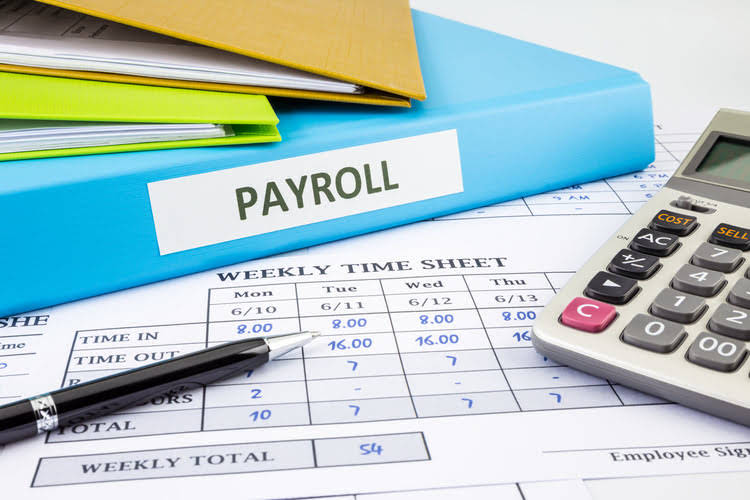
The account temporarily holds entries while you decide how you will classify them. A suspense account can also hold information about discrepancies as you gather more data. Both suspense accounts and clearing accounts are used to temporarily record transactions, until they can be permanently assigned. Suspense accounts, however, are more typically used when there is some question about the transaction that needs to be resolved. Therefore, it is vital to have a process in place to clear out the suspense account on regular basis so that all of the suspense account entries are moved into their designated accounts to zero out the suspense balance.
Accounting Ratios
In any case, every effort should be made to eliminate all unidentified transactions held in the suspense account by the end of the fiscal year, otherwise the annual financial statements will be inaccurate. As cash has been received, an accounting entry will be recorded in the suspense account until the missing information is provided or obtained. It is useful to have a suspense account, rather than not recording transactions at all until there is sufficient information available to create an entry to the correct account(s). Otherwise, larger unreported transactions may not be recorded by the end of a reporting period, resulting in inaccurate financial results. Together, these advanced tools from HighRadiu streamline the reconciliation process, enhancing compliance with international accounting standards.
Related AccountingTools Courses

This ensures that your money is safely held while any uncertainties are resolved. Suspense accounts serve as temporary holding areas for transactions that cannot be immediately classified. They are the placeholders that keep the accuracy of your financial records intact while you figure out the account where the transaction suspense account meaning belongs and add it to the general ledger. A suspense account is a component of a company’s financial accounts that is used to record confusing entries that require additional examination to determine their right classification. Depending on the context, “suspense account” might mean a number of different things.
Example #4 – Trial Balance
If you do not receive a new yellow and white certification card this year, it could mean you moved without updating your address. Let’s suppose a company receives a cash sum of $500 but it cannot figure out who the money is from or what it is for. Suspense accounts are also used by lenders, such as mortgage providers, when borrowers accidentally or intentionally break up their regular payment obligations. They know who sent the payment, however, the vendor has several outstanding invoices and haven’t specified which invoice the payment should be paid against. Despite its mysterious connotations, “suspense” in this case simply refers to the fact that a transaction or its designation in a company’s books has been suspended temporarily, pending some further action. You will be removed from Texas’ voter rolls following two general elections on the suspense list, or roughly four years.
- Such unexplained sums will not be left in transactions which have already been established.
- When you record uncertain transactions in permanent accounts, you might have incorrect balances.
- When a transaction occurs and it’s not immediately clear where it should be recorded, it goes into this mystery box until more information is available to properly classify it.
- When you find out the invoice, close the suspense account and move the amount to the correct account.
- After you make corrections, close the suspense account so that it’s no longer part of the trial balance.
Example #1: Receiving a partial payment
Our GST Software helps CAs, tax experts & business to manage returns & invoices in an easy manner. Our Goods & Services Tax course includes tutorial videos, guides and expert assistance to help you in mastering Goods and Services Tax. Clear can also help you in getting your business registered for Goods & Services Tax Law. If there is credit balance in suspense a/c, it is shown on asset side of balance sheet. Chartered accountant Michael Brown is the founder and CEO of Double Entry Bookkeeping. He has worked as an accountant and consultant for more than 25 years and has built financial models for all types of industries.
While there is no definitive timetable for conducting a clearing-out process, many businesses try to regularly accomplish this on a monthly or quarterly basis. A trial balance is the closing balance of an account that you calculate at the end of the accounting period. When debits and credits don’t match, hold the difference in a suspense account until you correct it. In accounting for small businesses, most suspense accounts are cleared out on a regular basis.
- The payment did not specify which invoice it was intended for, so it was temporarily held in a suspense account.
- The servicer must also explain what the borrower needs to do in order to have that money applied to their mortgage payment.
- Suspense accounts are vital but can complicate reconciliation, which is crucial for maintaining accurate and compliant financial records.
- For the past 52 years, Harold Averkamp (CPA, MBA) hasworked as an accounting supervisor, manager, consultant, university instructor, and innovator in teaching accounting online.
- The bookkeeper is unable to balance the company’s trial balance, with the credit column exceeding the debit side by $500.
Examples: Suspense Account Journal Entries

